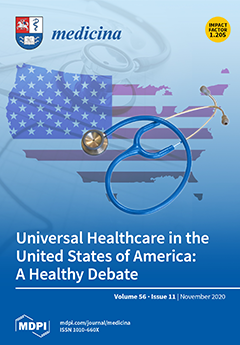Background and Objectives: Androgens play a significant role in the development of male reproductive organs. The clinical use of synthetic testosterone derivatives, such as nandrolone, is focused on maximizing the anabolic effects and minimizing the androgenic ones. Class II anabolic androgenic steroids (AAS),
[...] Read more.
Background and Objectives: Androgens play a significant role in the development of male reproductive organs. The clinical use of synthetic testosterone derivatives, such as nandrolone, is focused on maximizing the anabolic effects and minimizing the androgenic ones. Class II anabolic androgenic steroids (AAS), including nandrolone, are rapidly becoming a widespread group of drugs used both clinically and illicitly. The illicit use of AAS is diffused among adolescent and bodybuilders because of their anabolic proprieties and their capacity to increase tolerance to exercise. This systematic review aims to focus on side effects related to illicit AAS abuse, evaluating the scientific literature in order to underline the most frequent side effects on AAS abusers’ bodies.
Materials and Methods: A systematic review of the scientific literature was performed using the PubMed database and the keywords “nandrolone decanoate”. The inclusion criteria for articles or abstracts were English language and the presence of the following words: “abuse” or “adverse effects”. After applying the exclusion and inclusion criteria, from a total of 766 articles, only 148 were considered eligible for the study.
Results: The most reported adverse effects (found in more than 5% of the studies) were endocrine effects (18 studies, 42%), such as virilization, gynecomastia, hormonal disorders, dyslipidemia, genital alterations, and infertility; cardiovascular dysfunctions (six studies, 14%) such as vascular damage, coagulation disorders, and arteriosus hypertension; skin disorders (five studies, 12%) such as pricking, acne, and skin spots; psychiatric and mood disorders (four studies, 9%) such as aggressiveness, sleep disorders and anxiety; musculoskeletal disorders (two studies, 5%), excretory disorders (two studies, 5%), and gastrointestinal disorders (two studies, 5%).
Conclusions: Based on the result of our study, the most common adverse effects secondary to the abuse of nandrolone decanoate (ND) involve the endocrine, cardiovascular, skin, and psychiatric systems. These data could prove useful to healthcare professionals in both sports and clinical settings.
Full article






